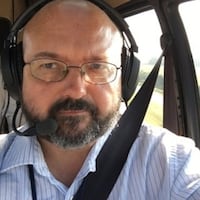“David boasts the technical and business insights in the nano-materials area,” said Bor Jang, Angstron co-founder and a Wright State University engineering professor. Jang knew him for years before hiring him.
Recently, the company named David Burton its executive vice president. Burton has worked as research and development manager with Applied Sciences, a Cedarville firm that in recent years was trying to produce carbon nanofibers for the Chevrolet Volt.
With Angstron, Burton manages business development and marketing for America and Europe. The company markets its nano-graphene platelets (NGPs) as a cost-effective alternative to other nanomaterials. Among its uses, it provides stable charge-discharge cycling for lithium-ion batteries.
The company — which bills itself as the world’s largest NGP producer — holds that its material will contribute to quicker battery charges and more enduring performance.
And a little goes a long way, according to Angstron: One gram of the NGPs has a service area of 700 square meters.
The company has been in Dayton since 2008 and has invested about $1 million into its McCook Street production site in recent months. Burton pointed to racks of testing devices arrayed to test battery power.
Burton said that progress in battery technology is sometimes seen as slow or incremental. “The world today does need higher capacity batteries,” he said. “The old-style phones used to go a week between charges. But now with the smartphones ,there’s a lot more power. I have to charge my phone almost daily now.”
“Some of the things we’re working on now address these issues,” he said.
The company’s biggest investment of late has been its new “dry” rooms — production spaces with very low humidity, perfect for assembling, handling and testing lithium battery materials that don’t like moisture.
David Neff, an Angstron materials engineer, said one room stays below 10 percent humidity while the other is lower than 1 percent any time of the year.
“When you come back out of it, it’s like walking into a rain forest,” he said.
Jang said the rooms were built with the help of an investor, whom he declined to identify. And he expects to bring on new investors soon.
“It has been a very long process of negotiation for investment,” he said.
About the Author
